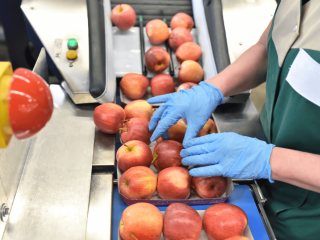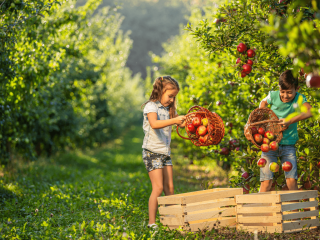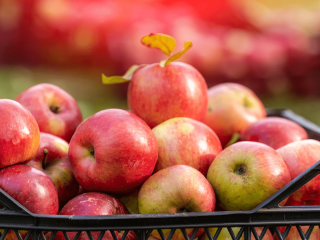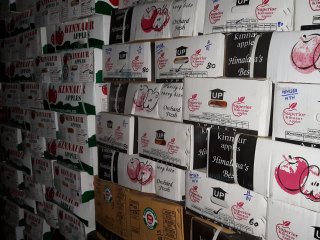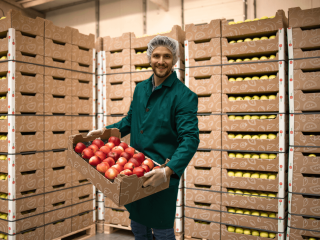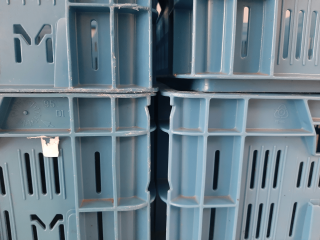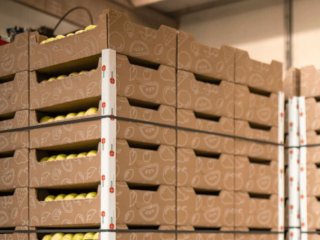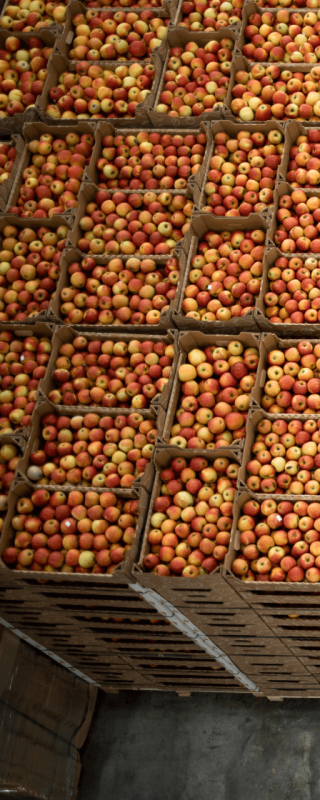
Packing and stacking apples
Apples are packed in all types of packaging. Crates, cartons, trays, bags and punnets are convenient containers for handling, transport and marketing. Careful packing is important when working with fresh produce, to avoid damages. The packaging is designed to protect the produce from mechanical damage, but is only effective when used correctly. When stacking the packages on a pallet, the risk of falling should be minimized. It must be done in such a way the packages provide each other stability. Completed pallets should be strapped well so that the contents cannot shift or fall.
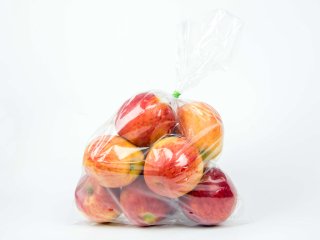
Packing the apple
Apples are packaged according to strict criteria. The uniformity in size and quality within each class is important for the market. Failure to remove overripe, misshapen, diseased or otherwise damaged apples creates problems in subsequent marketing.
Apples are susceptible to new damages such as bruises and skin punctures when not handled carefully during packaging and palletizing. These damages are not always immediately visible, but can lead to disappointments later in the chain and even to reclamations. Therefore, packaging of apples should be done according to the right procedures.
Apples are susceptible to new damages such as bruises and skin punctures when not handled carefully during packaging and palletizing. These damages are not always immediately visible, but can lead to disappointments later in the chain and even to reclamations. Therefore, packaging of apples should be done according to the right procedures.
Packing attention points
Stacking attention points
“It’s better to put 5 fewer apples in the box than 1 too many, as 1 apple sticking out, may result in a problem for many”
